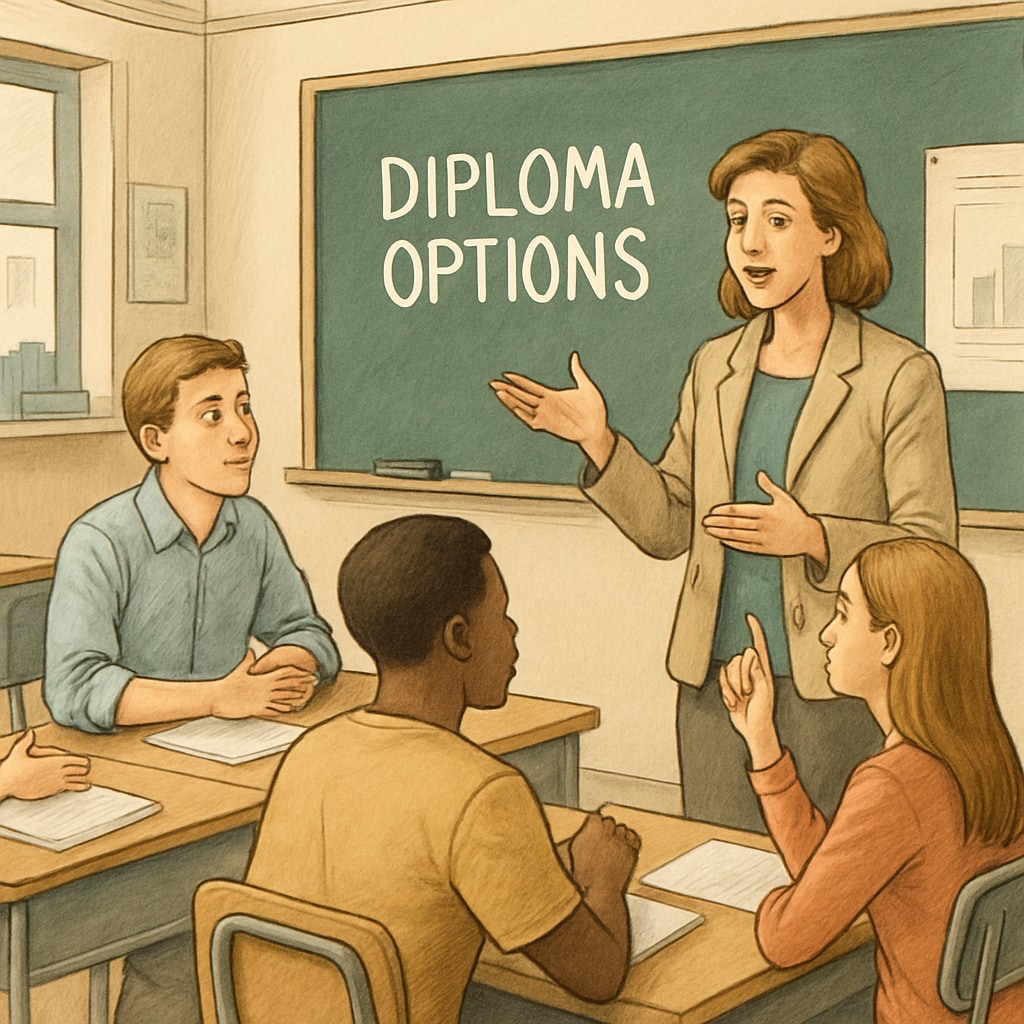Choosing a high school diploma pathway is a critical decision that can shape a student’s future, yet many find themselves regretting their choice. For those who selected a modified high school diploma, the decision may later feel limiting, leading to regret and uncertainty about future opportunities. Understanding the differences between standard and modified diplomas, identifying the reasons for regret, and exploring options to address these feelings are key steps toward finding solutions.
What Is a Modified High School Diploma?
A modified high school diploma is often designed for students who face unique challenges, such as learning disabilities, health issues, or significant academic struggles. While this diploma aims to accommodate individual needs, it typically involves adjusted curriculum requirements and may not align with the expectations of certain colleges, universities, or employers.
For example, students with a modified diploma may not have completed courses like advanced math or science, which can limit their eligibility for higher education programs or specialized career paths. While the intention behind the modified diploma is admirable, the long-term impact on a student’s prospects can lead to feelings of regret.

Common Reasons for Regretting a Modified Diploma
Regret over a modified high school diploma typically stems from a combination of academic, professional, and personal factors. Below are some of the most common reasons:
- Limited Higher Education Opportunities: Many colleges and universities require a standard diploma for admission. A modified diploma may not meet these criteria, restricting access to certain programs.
- Employment Challenges: Some employers view a modified diploma as less rigorous, which may impact job prospects, particularly in competitive industries.
- Social Comparison: Students may feel inadequate compared to peers who received standard diplomas, leading to a sense of failure or missed potential.
- Lack of Awareness: Some students and families may not fully understand the long-term implications of choosing a modified diploma at the time of the decision.
These factors often converge, creating a cycle of frustration and self-doubt. However, it is crucial to remember that regret does not signify a dead end. There are actionable steps to address these concerns.
Exploring Conversion Options and Solutions
If you regret choosing a modified high school diploma, there are several pathways to consider for addressing your concerns:
- GED (General Educational Development) Test: The GED is widely recognized as an alternative to a high school diploma. It demonstrates equivalent academic skills and can open doors to higher education and employment opportunities.
Learn more about the GED on Wikipedia. - Adult Education Programs: Many school districts and community colleges offer programs that allow students to complete missing coursework and earn a standard diploma.
- Specialized Training Programs: Vocational schools or certificate programs may provide targeted education in specific fields, bypassing the limitations of a modified diploma.
- Advocacy and Counseling: Consulting with a school counselor or career advisor can help identify tailored solutions and resources based on your individual goals.
By taking proactive steps, students can mitigate the limitations of a modified diploma and pursue their desired academic or career paths.

Moving Forward with Confidence
Regretting a modified high school diploma does not mean your opportunities are permanently limited. With the right strategies and resources, you can redirect your trajectory toward success. It is never too late to learn, grow, and achieve your goals. Remember, the diploma that you hold is just one part of your journey—it does not define your entire potential.
Whether through additional education, career training, or seeking professional guidance, there are diverse ways to overcome the challenges associated with a modified diploma. The key is to focus on your aspirations and take actionable steps toward realizing them.
Readability guidance: Use short paragraphs and lists to summarize key points; ensure smooth transitions with words like “however,” “therefore,” and “for example.” Maintain an active voice and avoid overly complex sentences.


